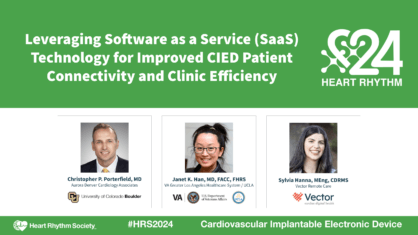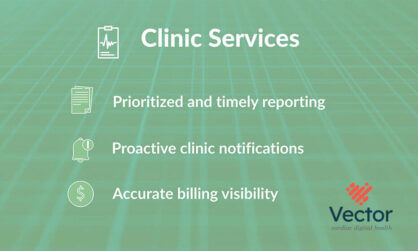A Paradigm Shift in Electrophysiology Reimbursement

What Clinics Can Do to Protect the Diagnosis and Treatment of Cardiac Arrhythmias
Scope of Reimbursement Cuts
The release of the annual Proposed Medicare Physician Fee Schedule is an event that business leaders and caregivers in healthcare anxiously anticipate. Operations and hiring plans are built and broken at the hands of the Schedule creators.
Reimbursement directly translates to investment in innovation, staff, and patient access. America’s healthcare reimbursement system has the power to create or decimate entire healthcare sectors. Every year, through the Centers for Medicaid and Medicare Services (CMS) Fee Schedule, health tech businesses and healthcare institutions are built and broken overnight.
This year, drastic reimbursement cuts are proposed for the treatment of sudden cardiac death and atrial fibrillation. Electrophysiology is being hit with an additional ~10% reduction in reimbursement for ablation procedures on top of the 26% reduction instituted last year.
The key technology used to diagnose and monitor patients with arrhythmias is also hit with surprising cuts. Payment for the remote monitoring of implantable loop recorders and implantable cardiac monitoring services was slashed by an average of ~85% in WPS and NGS territories, affecting thirteen states. A typical clinic may see annual revenue reductions of ~$500k.¹
Financial Impact on Clinics and Patients
Low payment for the diagnosis, monitoring, and treatment for arrhythmia creates a financial hardship for health systems when costs to deliver services are at historic highs. Staffing shortages have increased costs that outpace today’s record-breaking inflation.
What will be the effect? Early diagnosis and diligent monitoring speed time to treatment, prevent heart disease, and improve patient lives while utilizing fewer healthcare resources. Prevention and control of chronic disease are the keys to cost containment and patient outcomes.
Short-staffed clinics are hard-pressed to meet the growing needs of our aging population. Heart disease remains the number one cost and number one killer in America. Instead of decreasing payments, Medicare should set rates that allow clinics to invest in technologies that prevent disease progression and enable personalized patient care.
Steps for Clinics to Take Action
These recent announcements are the latest in a concerning trend and, in some cases, are in direct opposition to the recommendations set forth by the American Medical Association/Specialty Society RVS Update Committee (RUC).
The field of cardiac electrophysiology has revolutionized cardiology and offers patients the option of truly curative procedures. As an advocate for cardiac device clinics and electrophysiologists, Vector Remote Care requests that governing bodies responsible for setting rates conduct thorough research into the care delivery costs for diagnosing and treating arrhythmias and align reimbursement rates accordingly.
In parallel, impacted healthcare professionals can voice their concerns in two ways:
- NGS is accepting feedback on the proposed rate changes for the G2066 code through August 31, 2022. This impacts CT, IL, MN, NY, and WI clinics where ILRs and ICMs are implanted and monitored.
- ACC has organized an Action Alert System for HCPs nationwide to oppose the proposed rate changes for CPT codes 93653, 93654, and 93656, which cover SVT, VT, and AF ablations. This comment period closes on September 6, 2022.
Optimize Remote Monitoring Programs for Financial Growth
Vector Remote Care’s mission is to empower cardiac clinicians to optimize data management and increase clinic efficiency so they can do what they do best: provide life-saving patient care. Reimbursement reductions on the scale of these announcements reduce clinics’ capability to do that.
Vector supports clinics by finding efficiency opportunities through increasing patient connectivity and timely billing for cardiac devices. We’ve seen how simple improvements, powered by technology and services, can significantly impact clinic revenue and patient outcomes. Our clinics see a 58% increase in revenue simply by increasing patient connectivity and ensuring transmissions are billed on time.
If you are interested in strategies that will help lessen the impact of these rate cuts on your bottom line, please set up a time to connect with us or reach out to us at connect@vectorremote.com.
¹500 patients at ~$120 reimbursement under current rates for twelve months ($720k) vs/ 500 patients at ~$22 for twelve months ($132k). These figures represent the median cost across the 13 affected states.














